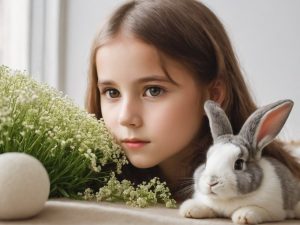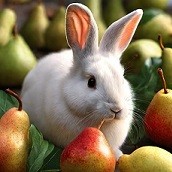Can Rabbits Eat Alyssum Flowers? Diet, Safety & Preparation Insights
What Exactly are Alyssum Flowers?
Alyssum

The Digest: Alyssum on the Bunny Menu
Good news for our bunnies: Alyssum flowers get the green light! Rabbits can safely consume them. But remember, while they’re a safe snack, they shouldn’t dominate the bunny’s plate. Why? Simply put, rabbits thrive on a balanced diet, and although Alyssum is a lovely nibble, it doesn’t fulfill all their nutritional needs.
Serving Size: Striking the Right Balance
Diving deeper into the rabbit-Alyssum relationship, we need to ask: how much of this floral treat is suitable for our fluffy friends? Consider Alyssum flowers as an occasional delight rather than a dietary staple. For a medium-sized rabbit, a sprinkle over their main
Nutritional Gains: The Perks of Alyssum
Every
Vitamins:
A good source of certain B vitamins crucial for maintaining a healthy metabolism.
Minerals:
Elements like potassium and magnesium play a pivotal role in muscle contraction and nerve signaling.
Broadening their menu with a variety of safe plants also enriches the eating experience for rabbits and can be a wonderful way to stave off dietary boredom.
Heed the Cautions: Keeping Bunnies Safe
Let’s get this straight: while Alyssum is non-toxic, there’s wisdom in treading with caution when adding anything new to your rabbit’s diet. A gradual introduction is the best approach. Be vigilant and keep an eye out for any changes in their behavior, appetite, or droppings. Each rabbit is an individual, and their digestive system’s adaptability can vary.
Another crucial consideration is the origin of the Alyssum flowers. It’s paramount to ensure they haven’t been exposed to pesticides or other harmful chemicals. If they come straight from your pesticide-free garden, you’re in the clear. But if you’re buying them, always opt for organic.
Expanding the Menu: Other Rabbit-Safe Options
Variety, as they say, is the spice of life, and our rabbits surely appreciate some dietary diversification. If Alyssum has piqued your interest in bunny-safe flowers, here are a few more you can consider:
Roses:
Surprisingly, every part of a rose is bunny-approved – petals,
Marigolds:
These bright blossoms aren’t just eye-candy; they’re perfectly safe for rabbits.
Camomile:
This isn’t reserved just for our bedtime tea;
It’s essential to anchor this discussion in a fundamental truth about rabbit diets: hay is king. Fresh hay should comprise the lion’s share of their food, about 80%. Flowers, plants, and
On the note of fruits, they can be a delectable treat for our furry friends. Favorites include
In a Nutshell: Feeding Your Bunny Right
Rabbits are curious creatures, both playful and ever-ready to sample new foods. As caregivers, it’s our duty to ensure their safety and health. In the world of flowers, Alyssum emerges as a delightful, safe treat. But always operate on the principles of moderation and observation. Gradually introduce foods, monitor their reaction, and prioritize hay as the mainstay of their diet. With the right care, your bunny will reward you with lively hops, loving nudges, and years of treasured companionship.
Best Flowers for Pet Rabbits to Eat
| Feature | Description | References |
|---|---|---|
| Dandelions | Dandelions are a great source of vitamins and minerals, including vitamins A, C, and K, calcium, iron, and potassium. They also contain antioxidants that can help protect against oxidative stress and inflammation. |
[1][2][4][6] |
| Clover | Clover is a good source of fiber and protein, and it contains various vitamins and minerals, including vitamins A, B, and C, calcium, and iron. | [2][4] |
| Marigolds | Marigolds are a good source of antioxidants and contain various vitamins and minerals, including vitamins A, C, and E, and potassium. | [2][6] |
| Roses | Roses are a good source of vitamin C and contain various antioxidants that can help protect against oxidative stress and inflammation. | [2][6] |
| Nasturtiums | Nasturtiums are a good source of vitamin C and contain various antioxidants that can help protect against oxidative stress and inflammation. They also have antibacterial properties that can help prevent infections. |
[2][6] |
- rabbits.world – Dandelions & Rabbits
- bestpetstips.com – Can Rabbits Eat Dandelion Flowers?
- fresheggsdaily.blog – The Health Benefits of Dandelions
- rabbitbreeders.us – Can Rabbits Eat Dandelions?
- verywellfit.com – Dandelion Greens Nutrition Facts
- bunnyparents.com – Can Bunnies Eat Dandelions?







Leave a Reply